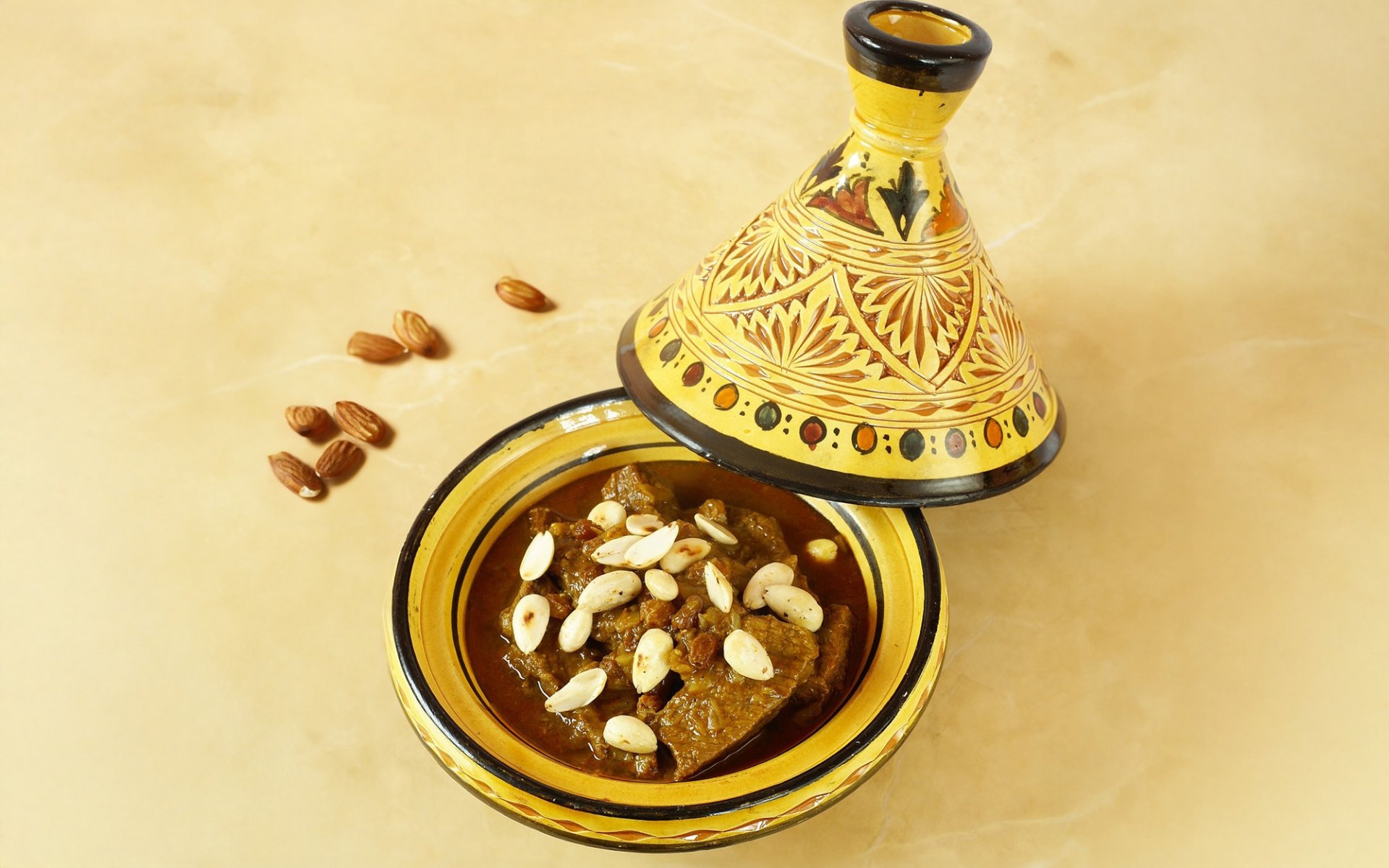Mrouzia

Morocco stands as another intriguing and mysterious country in Africa. This land is not only distinctive for its architecture but also boasts a rich tapestry of fascinating cultures, especially concerning its culinary traditions. Moroccan cuisine features a wide array of dishes that are globally recognized, including the ancient and valuable dish known as Mrouzia.
Moroccans take immense pride in their cuisine, often preparing dishes with meticulous care. Each dish frequently requires a long cooking time; some may even take an entire day to prepare. This dedication is particularly evident when cooking for guests, for whom Moroccans prepare meals with special attention and in large quantities as a gesture of honor and warm hospitality. Consequently, Moroccan cuisine, including Mrouzia, is widely acclaimed worldwide for its exquisite taste and elaborate preparation.
Origins from Eid al-Adha and Royal Courts
The origins of Mrouzia can be traced back to the Marinid dynasty in 13th-century Morocco. It was first created by Muslims to celebrate Eid al-Adha (the Festival of Sacrifice), a significant religious holiday in Islam.
On this holiday, Moroccan Muslims typically prepare Mrouzia using lamb or goat meat, which is ritually sacrificed. They season it with spices such as cinnamon, ginger, saffron, and honey as key flavorings. These ingredients symbolize a harmonious blend of savory and sweet elements, reflecting balance in life and a perfect harmony of flavors. Furthermore, legend has it that this dish was a favorite of Sultan Moulay Ismail, who ruled Morocco from 1672 to 1727, known for his strength and refined taste, thus elevating Mrouzia to royal status.
Unique Characteristics and Meticulous Cooking Process
Over time, Mrouzia gained increasing popularity, transcending its initial religious festival context to become a beloved dish enjoyed by Moroccans in general. Different regions adapted its form and flavor to suit local tastes, yet it consistently retained the essential taste of spices and honey, which remain the core ingredients of Mrouzia.
One of Mrouzia's distinguishing features is its slow cooking process. The meat is simmered for many hours, allowing the spices and honey to deeply permeate the flesh. This slow cooking method not only tenderizes the meat and enhances its flavor but also adds complexity to the dish. It reflects a Moroccan tradition where the people dedicate considerable time and meticulous attention to every detail of the cooking process.
Mrouzia Today: Adaptations and Global Spread
Although Mrouzia remains a favorite Moroccan dish and is often associated with important festivals, today this culinary delight is gaining popularity worldwide. It has evolved over time, with additions such as raisins and almonds (which are popular in current recipes) to add texture and a wider range of flavors. Additionally, contemporary chefs have experimented with using different types of meat, such as beef or chicken, to add uniqueness and options to this dish, catering to the tastes of a global audience interested in Moroccan cuisine.
Mrouzia is more than just a meal; it represents a Moroccan culinary culture rich in stories, dedication, and unique flavors that always impress those who taste it. It is a culinary heritage that beautifully reflects Morocco's historical and cultural richness.


